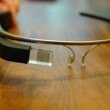 Ever seen an acronym you
didn’t know? Are you a parent or teacher with kids online? Are you a business
professional trying to stay savvy? Or just someone who loves to get online…
Ever seen an acronym you
didn’t know? Are you a parent or teacher with kids online? Are you a business
professional trying to stay savvy? Or just someone who loves to get online…
In an age where everything
from job searching to dating is interactive, knowing how to communicate in your
online life is a must. There are new
technologies, new online services, and new lingo created every day. If you
think it's tough to keep up with it all, you’re not alone.
Welcome to the weird, wonderful
world of online jargon ;-) Not only has the Internet and texting changed the
way we communicate, it has spawned an entirely new language that is growing
every day.
That’s why there is NetLingo,
to keep track of new terms and organize it in a way that is useful to you.
Whether you're a professional who feels like you're on information overload, or
a power user who wants more, or a parent who wants to keep up with your kids,
NetLingo.com can help.
NetLingo published a second book
“NetLingo: The List - The Largest List of Text & Chat Acronyms” and it contains all of
acronyms and abbreviations you’ll see in text messages, email, IM, social
networks, websites, dating sites, job sites, auction sites, discussion forums, gaming
sites, chat rooms, blogs… oh, and in the real world too.
The updated 2014 version of “NetLingo:
The List” (136 pages) defines the crazy array of letters, numbers and symbols
that comprise our new conversations. Known as acronyms, abbreviations, SMS talk
and leetspeak, these terms are used by millions of people in a variety of
online settings. This edition contains French, German, Italian, Spanish,
Portuguese, Dutch, Finnish, Swedish, Welch, Czech and Chinese text terms too!
See if you know any of these popular acronyms and text
codes
POTATO
BRB
LOL
IRL
w00t!
POS
DRIB
GR8
ROTFL
WTF
OMW
WSUP
BOHICA
PDOMA
WOMBAT
|
pron
S2R
solomo
w’s^
ysdiw8
?^
143
182
303
404
459
53X
831
88
9
|
What are acronyms and why are they so popular?
With millions of people
texting and instant messaging every day, it's no wonder you've seen this
cryptic looking code. Acronyms are an integral part of computer culture and
grew rapidly on the Internet. Now, along with an alphabet soup of abbreviations
and symbolic messages, this online jargon has become a language of its own.
So what are acronyms?
Shorthand? How do you begin to understand a new language?
Let’s start with the basics:
An acronym is derived from the first letters of a phrase and is pronounced as a
new word, for example POTATO stands for “People Over Thirty Acting Twenty One”
and is pronounced "potato."
Shorthand refers to an
abbreviation, or initialism, that is pronounced by saying the letters
one-by-one, for example FYI is pronounced "F-Y-I" and BRB is
pronounced "B-R-B". There are,
of course, exceptions. Some acronyms go both ways, such as FAQ, which can be
pronounced "fak" or "F-A-Q".
It should also be noted that
acronyms are generally typed IN ALL CAPS (not to be confused with SHOUTING)
whereas shorthand is often typed in all lowercase.
Now let’s start to mix things
up. Sometimes the shorthand isn't shorter than the original phrase, for example
"dewd" means "dude" and "kewl" means
"cool" and :::poof::: means "I'm gone".
Now let’s add some symbols
and numbers! Leetspeak is the name for a type of symbolic jargon in which you replace
regular letters with other keyboard characters to form words, for example:
· backward and forward slashes create this shape
"/\/\" to stand for the letter M;
· numbers and symbols often replace the letters they
resemble (for example the term "leetspeak" is written as
"!337$p34k");
· letters can be substituted for other letters that
might sound alike (such as "ph" is transposed with "f" so
"phear" is used instead of "fear"); and
· common typing errors such as "teh" instead
of "the" and “pwn” instead of “own” are left uncorrected.
The result is a dynamic
written language that eludes conformity or consistency. In fact, the culture of
online jargon encourages new forms of expression and users will often award
each other's individual creativity.
So what makes texting and instant messaging so
popular?
In short, it’s fast, cheap,
and cool. itz hw 2 tlk w/o bng hrd ;-)
Texting lets you finalize
last-minute plans, track down friends, send pictures, correspond while
traveling, and pass on information with just a few clicks of the cell phone
keypad. IM lets you have real-time conversations with friends or colleagues or
several people at once on your computer screen. Texing and IM are popular
because they are private: no one can hear you “talking.” Acronyms and smileys
are popular because they’re short and they bring emotional expression into a
written world.
Face it, communication is
changing. It’s becoming quicker and less formal, and while it’s impossible to
capture every instance of every text message out there, this is the definitive
list. Many people at some point will use or see a variation of a term in this
book, often without the vowels so as to keep the text or IM short. Such as: omw, meet me n frnt pls -or-
got ur vm, thx 4 info, ttyl
Think it’s tough to understand? It’s not, take this
test:
Cna yuo raed tihs? Olny 55
plepoe out of 100 can.
i cdnuolt blveiee taht I
cluod aulaclty uesdnatnrd waht I was rdanieg. The phaonmneal pweor of the hmuan
mnid, aoccdrnig to a rscheearch at Cmabrigde Uinervtisy, it dseno't mtaetr in
waht oerdr the ltteres in a wrod are, the olny iproamtnt tihng is taht the
frsit and lsat ltteer be in the rghi t pclae. The rset can be a taotl mses and
you can sitll raed it whotuit a pboerlm. Tihs is bcuseae the huamn mnid deos
not raed ervey lteter by istlef, but the wrod as a wlohe. Azanmig huh?
Like most new things,
communicating in abbreviations may seem strange at first but then fun after
awhile. Get copies of “NetLingo:
The List” for anyone you know who loves to get online! Not recommended for
children under 14 due to serious adult humor, it will entertain you as you look
up and translate the chat acronyms and text symbols you come across in your
life online. The one place to learn all of the online terms you’ll ever need to
know is NetLingo.com.
Erin Jansen is founder of
NetLingo.com and author of “NetLingo: The
Internet Dictionary” and “NetLingo: The List
- The Largest List of Text & Chat Acronyms.” Sign up for the free
Acronym of the Day!
 Microsoft could be about to turn the promise of virtual reality into, well, a reality, said Farhad Manjoo in The New York Times. The company unveiled a prototype of the Microsoft HoloLens, a “wondrous” pair of high-tech glasses that overlay three-dimensional holograms onto the environment around you. During one demonstration, I put on the headset and saw a scene from the video game Minecraft superimposed on a real living room. A Microsoft minder showed me how to use my hands to select a virtual hammer—a tool in the game—and instructed me to smash the coffee table in front of me. “She wanted me, in other words, to use a digital object to interact with a real one.” I waved my index finger, brought the hammer down, and was stunned by what happened: The coffee table shattered into digital splinters and then disappeared. “HoloLens had perfectly erased the coffee table from the environment.”
Microsoft could be about to turn the promise of virtual reality into, well, a reality, said Farhad Manjoo in The New York Times. The company unveiled a prototype of the Microsoft HoloLens, a “wondrous” pair of high-tech glasses that overlay three-dimensional holograms onto the environment around you. During one demonstration, I put on the headset and saw a scene from the video game Minecraft superimposed on a real living room. A Microsoft minder showed me how to use my hands to select a virtual hammer—a tool in the game—and instructed me to smash the coffee table in front of me. “She wanted me, in other words, to use a digital object to interact with a real one.” I waved my index finger, brought the hammer down, and was stunned by what happened: The coffee table shattered into digital splinters and then disappeared. “HoloLens had perfectly erased the coffee table from the environment.”






















